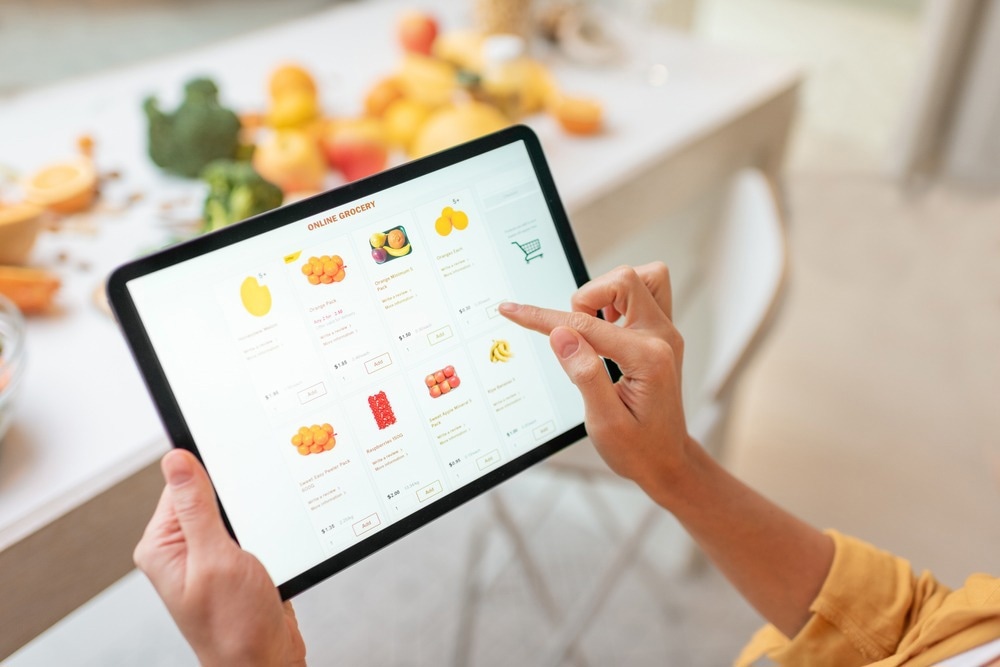A new study reveals a widespread lack of nutrition, ingredient, and allergen information on online grocery retailer sites, raising concerns for U.S. public health and safety.
In a recent study published in the journal Public Health Nutrition, researchers from the United States of America (US) investigated the presence, accessibility, and legibility of mandatory and voluntary nutrition labeling elements across ten major online food retailers of food and beverage products in the US.
They found that mandatory nutrition labels were present, accessible, and legible for only 35.1% of products, while voluntary marketing elements were present more frequently, with significant variation across retailers.
Background
The rapid growth of online grocery shopping, accelerated by the coronavirus disease 2019 (COVID-19) pandemic, has far outpaced the modernization of regulatory requirements for nutrition labeling in this space.
While the US Food and Drug Administration (FDA) regulations mandate the prominent display of nutrition information in physical stores, these rules do not explicitly cover the online marketplace, leaving it up to retailers to provide such information.
Preliminary studies suggest significant gaps in online compliance, with the availability of Nutrition Facts and other mandatory labels decreasing since the expansion of online food shopping. Furthermore, retailers often prioritize voluntary marketing claims, which are more prominently displayed than mandatory nutritional information, but how these claims are presented in online settings remains unclear.
Given this gap in our understanding of online nutrition labeling, researchers in the present study examined the labeling of a comprehensive basket of common food and beverage items across ten major US online retailers.
About the study
The researchers selected a representative food basket of 60 food and beverage items based on the USDA’s Thrifty Food Plan and other existing food baskets identified through PubMed searches. The items were divided into eight product categories. Resources like Statista.com and the Rudd Center’s Snack FACTS Report were used to determine the standard brands for each item.
Ten major online retailers, representing over 79% of the US online grocery market, were chosen for analysis, including Amazon, Walmart, and Kroger, particularly those involved in the Supplemental Nutrition Assistance Program Online Purchasing Pilot. Each item-retailer combination was coded for the presence of seven voluntary labeling elements, such as nutrient content and health claims. However, these elements were not evaluated for accessibility or legibility due to differing regulatory requirements.
Data were collected from January to August 2022 by capturing screenshots of item pages across various browsers. Each item-retailer pairing was assessed for the four elements mandated by the FDA: Nutrition Facts label, ingredient lists, allergen statements, and percent juice content, following specific standards to reflect accessibility and legibility.
Results and discussion
Mandatory nutrition labeling elements were available on mean 35.1% of the time across the online retailers, with specific availability rates varying by element: 36.5% for ingredient lists, 35.9% for allergen statements, 35% for percent juice content, and 32.8% for Nutrition Facts labels.
Notably, compliance varied significantly between retailers, with availability ranging from 2.4% to 89%. While 84.1% of mandatory elements were present on item pages, their accessibility sharply dropped to 35.2% when accounting for legibility requirements.
Voluntary labeling elements were more frequently available, appearing in 45.8% of items overall. Marketing claims emerged as the most displayed voluntary elements, present in 83.7% of items. These elements were more often found within webpage text (88.7%) than in images or packaging (76.1%). Among the various voluntary claims, nutrient content claims were present in 49.0% of items, while health and qualified health claims were the least common at 3.7%.
The presence of voluntary elements generally exceeded that of mandatory elements across most product categories, particularly in grains (20.8% difference), bakery, sweets, and snacks (17.3%), and dairy (16.6%). However, in the fruits and vegetables category, mandatory elements had a slightly higher availability (41.7%) than voluntary elements (32.8%), primarily due to the lower presence of marketing claims in that category.
Overall, the findings highlight significant gaps in the provision of mandatory nutrition information in the online grocery shopping landscape.
The study is strengthened by its comprehensive evaluation of a diverse food basket across multiple retailers, use of objective validation methods, and grounding in FDA regulations, making it the first to assess both mandatory and voluntary label elements in the US online food retail environment post-COVID-19.
However, the study is limited by its focus on the presence of accessibility and legibility for voluntary elements, potential non-representativeness of all food items or retailers, and the exclusion of small, local online retailers.
We saw many cases in which a nutrition facts label, for example, was only accessible after scrolling through a dozen marketing images, essentially forcing any consumers seeking that label to interact with marketing language. We simply cannot continue to let this sector grow without modern regulation”, the researchers remarked.
Conclusion
In conclusion, the study showed that online food retailers are not consistently providing clear, mandated nutrition information at the point of sale, unlike physical stores. This highlights the need for coordinated industry and regulatory efforts to ensure that consumers have access to essential nutritional information when shopping online to inform their decision-making.
Source link : News-Medica

